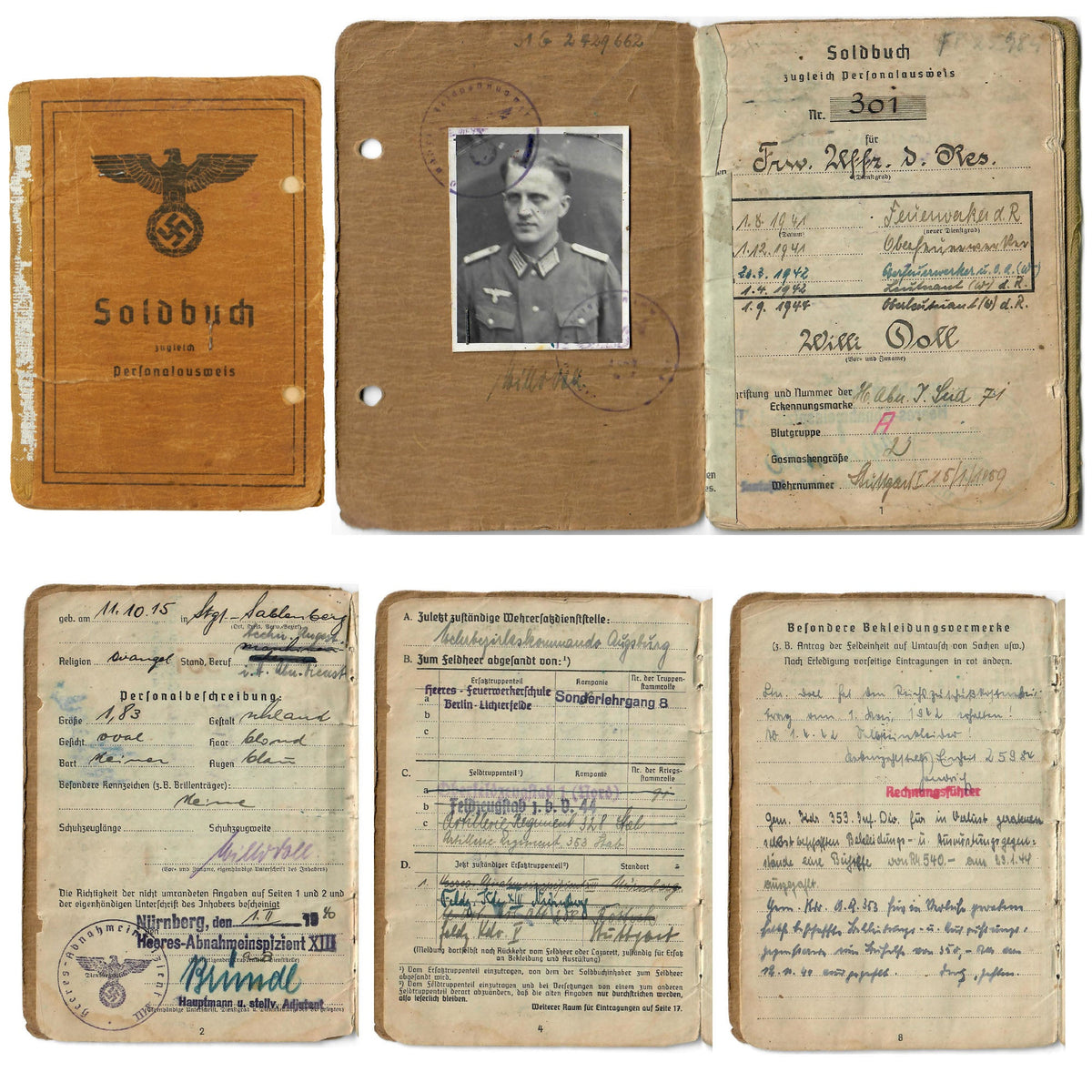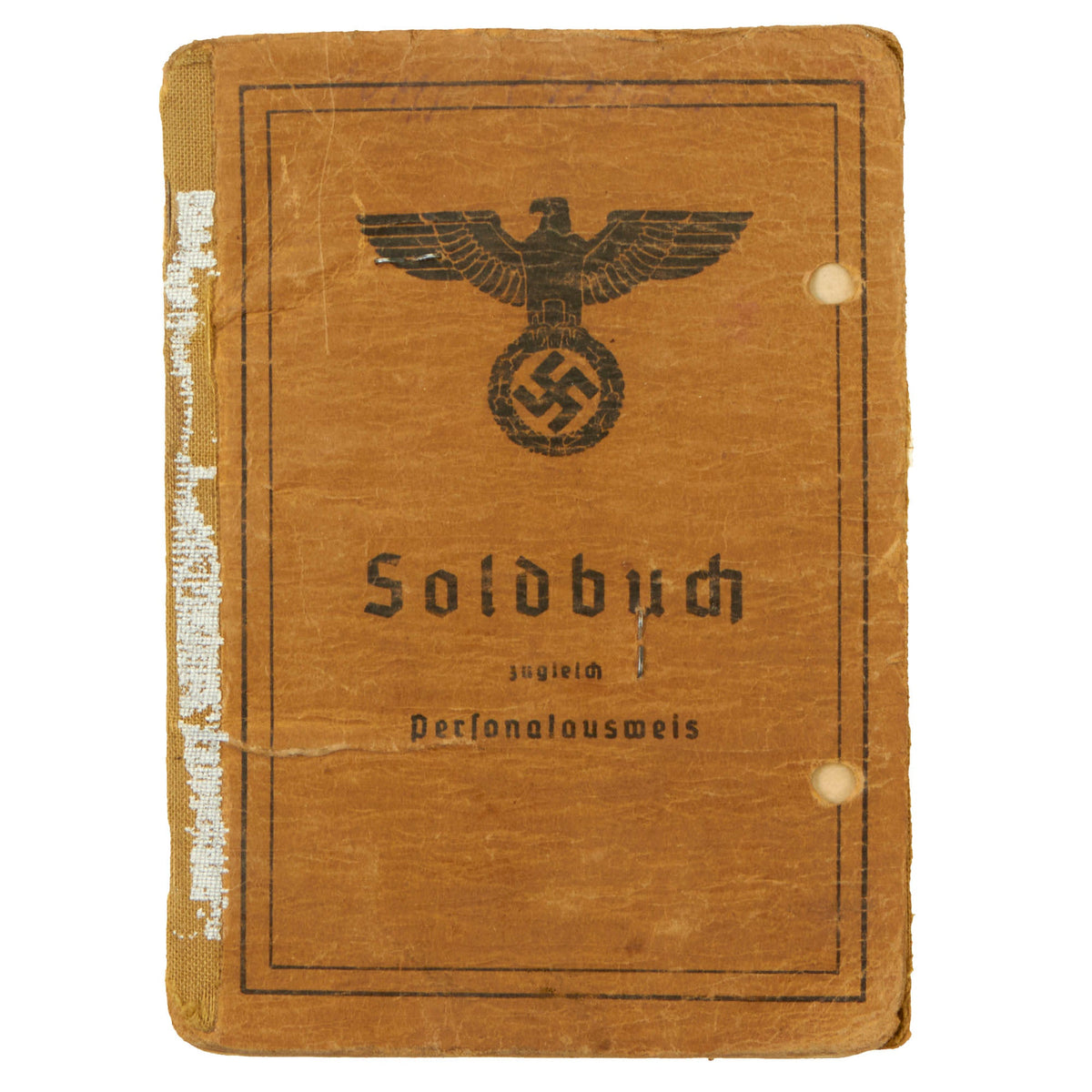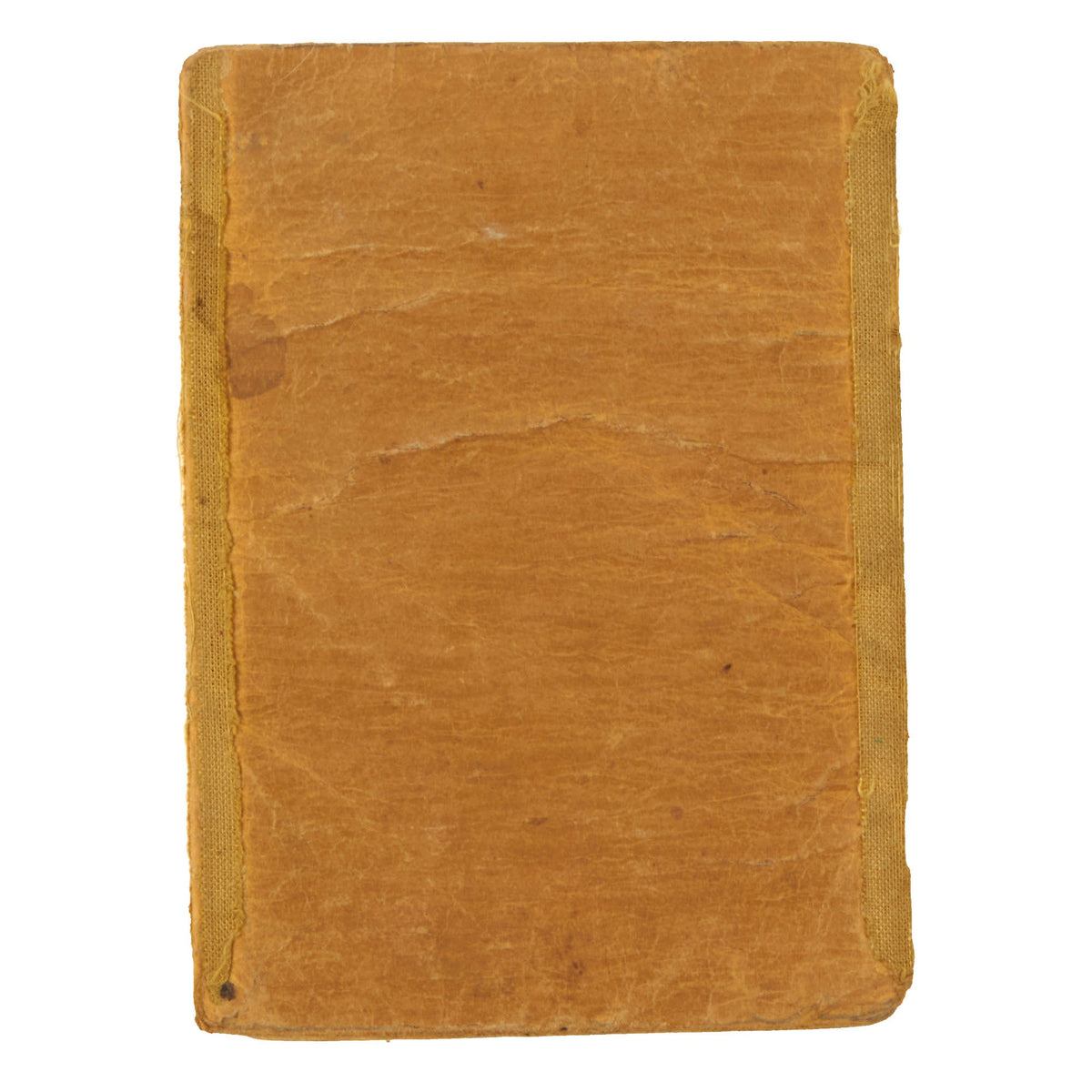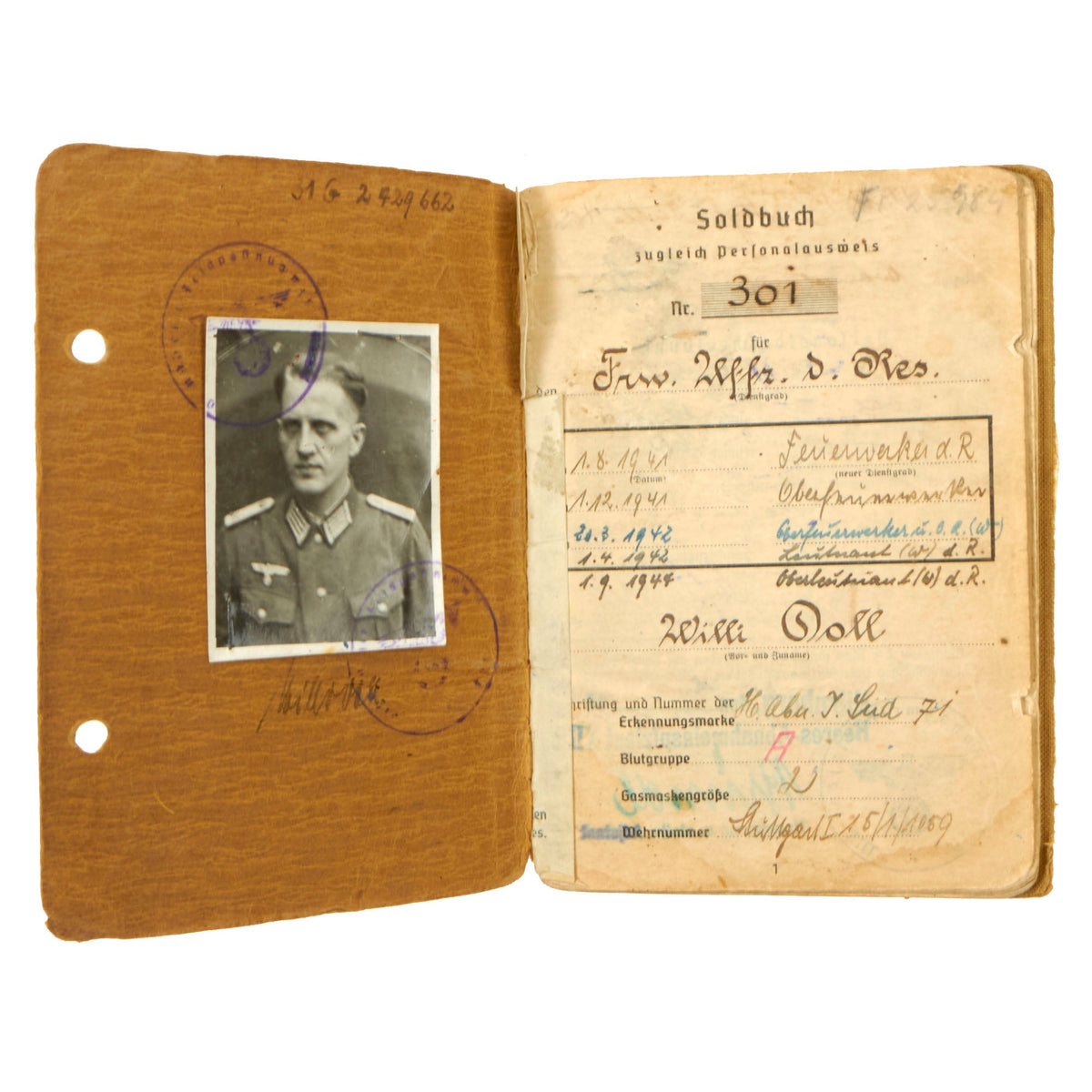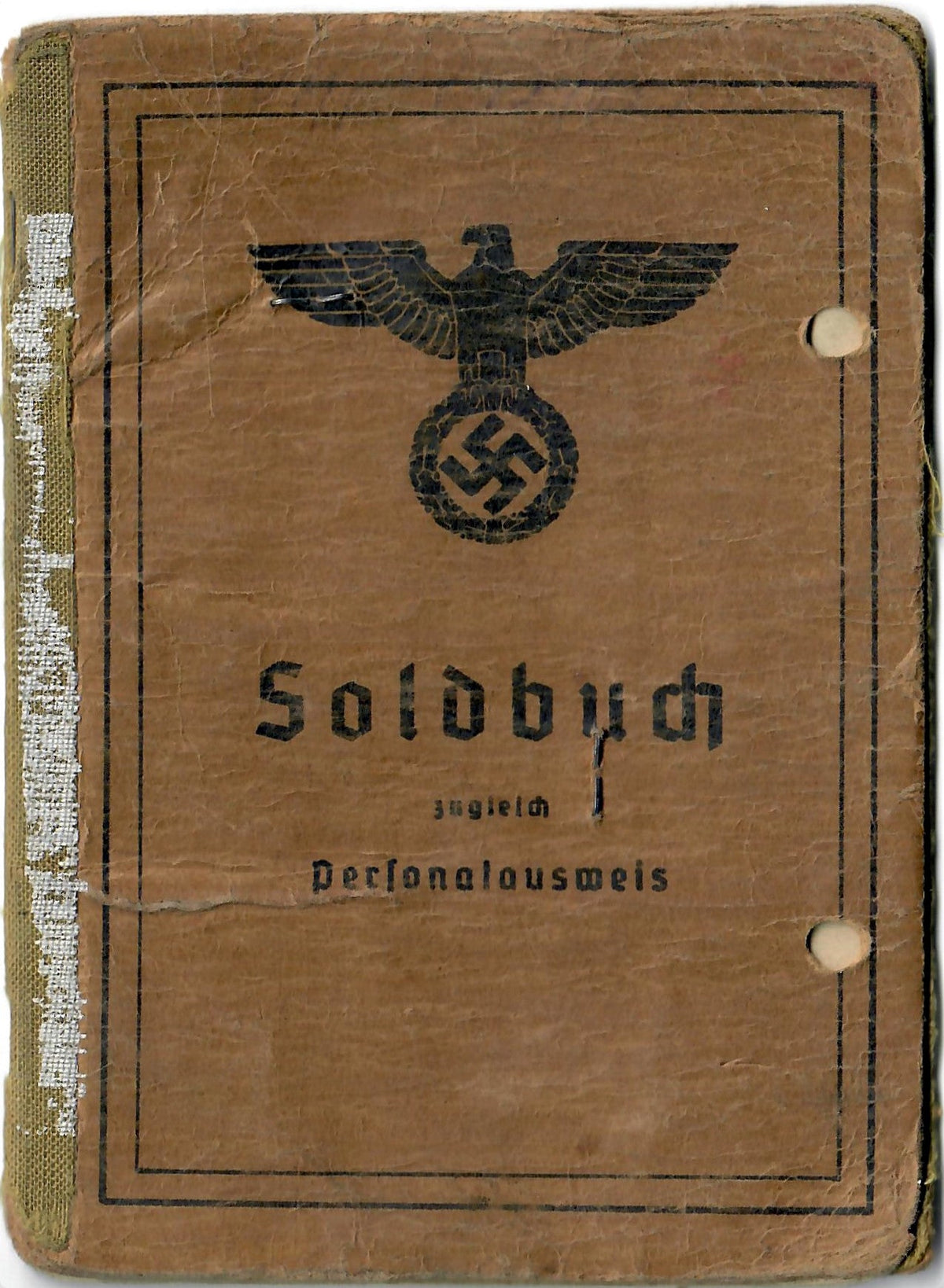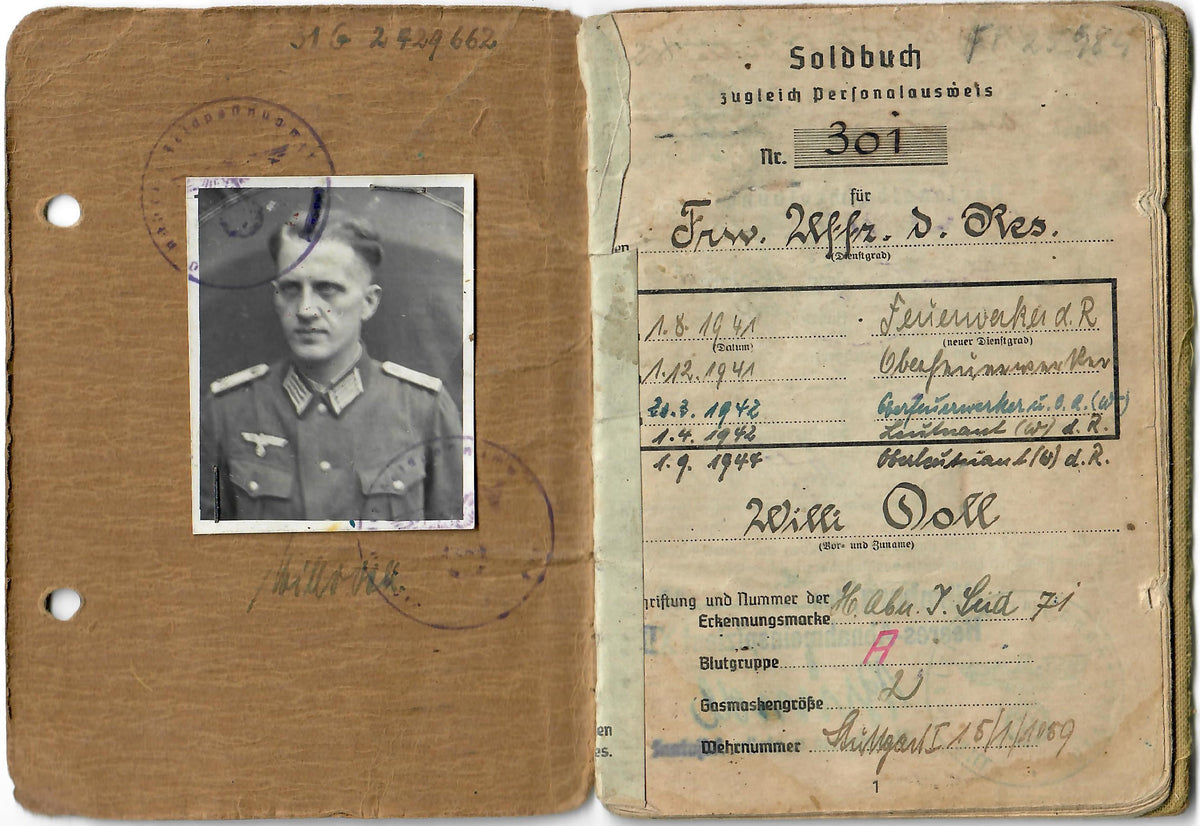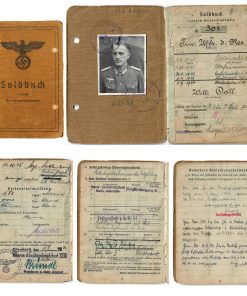Original German WWII Heer Soldbuch Soldier ID & Payment Book For 353rd Artillery Regiment & Falaise Pocket Feuerwerker Veteran Original Items
$ 495,00 $ 148,50
Original Item: One-of-a-kind. This is a fantastic genuine WWII German Heer Army Soldbuch zugleich Personalausweis (Pay book and identity card), issued to Artillerie Feuerwerker (artillery ordnance technician) Willi Doll, born 11. 10. 15. The inside of the front cover still retains a picture of Doll, retained by the proper type of staples, with stamps over the corners and his signature underneath. His rank is listed as being Frw. Uffz. d. Res. (Feuerwerker Unteroffizier der Reserve), or Ordnance Technician Reserve Sergeant, when it was issued 1. II. 1940 (February 1, 1940). This is an NCO rank, however the picture looks to show Doll as an Officer, probably a Leutnant (2nd Lieutenant). Feuerwerker was also both a title and a rank, so often identifying the rank can be difficult.
The first page also shows a series of changes in rank, which are listed below:
– 1. 8. 1941 – Feuerwerker d. R.
– 1. 12. 1941 – Oberfeuerwerker der Res.
– 21. 3. 1942 – Oberfeuerwerker d. R. (W)
– 1. 4. 1942 – Leutnant (W) d. R.
– 1. 9. 1944 – Oberleutnant (W) d. R.
It is possible that Doll was also an administrative official, which might explain why his picture shows him wearing uniform with officer insignia. It also is possible that the cover only may have been replaced during the period, as it definitely shows repairs from the WWII period. Needless to say, Doll worked his way up in rank over the course of the war, and this book is FULL of information related to his service, and will make a fantastic translation project for whoever purchases it.
Looking at page 4 in the Soldbuch, we can see a listing of the various units that Doll was a part of, with the last being Artillerie-Regiment 353 Stab (353th Artillery Regiment Staff). On page 8 we can see this first referenced on 23. 1. 44 (January 23, 1944), and again in the undated entry afterwards. This regiment was part of the 353. Infanterie-Division, which was part of the 7. Armee (7th Army) and later 5. Panzerarmee (5th Panzer Army), both of which were inside the Falaise pocket. This makes it extremely likely that Willi Doll was one of the soldiers inside the pocket, and was most likely captured at that point.
Overall condition is good and many pages are covered in handwriting and ink stamps, meaning this has some excellent further research potential. These are exceptionally rare and difficult to find with this much information, especially one from a soldier who can be traced directly to a famous engagement of WWII!
Of note: the persons filling out the book and the service record wrote using Kurrentschrift, an older form of Germanic script writing, which is why the all the “u” letters are written as “ŭ”. In this script the lowercase “n” and “u” are identical, so the latter gets the arc shaped mark over it. This is not indicative of an umlaut or other diacritical marking.
The 353rd Infantry Division Post D-Day.
After June 1944 (Operation Overlord), the 353rd Infantry Division was engaged on the newly reopened Western Front. In July, Mahlmann was replaced as divisional commander by Erich Müller. The division was trapped in the Falaise Pocket along with much of the 7th Army in August 1944. Here, it fought as part of the LXXXIV Army Corps (Dietrich von Choltitz), along with the 243rd and 275th Infantry Divisions, the 2nd and 17th SS Panzer Divisions, the Panzer Lehr Division, the 5th Luftwaffe Division and the 91st Air Landing Infantry Division. The division was briefly commanded by a colonel named Thieme in early August, before Paul Mahlmann returned to command later the same month. The division’s remnants were refreshed near Trier in November 1944 through the addition of Luftwaffe Field Battalion XX, Battalion Garten, Replacement/Training Battalion 313, Security Battalion 547 and Landesschützen Battalion II./12 as a new Division Fusilier Battalion.
Between December 1944 and January 1945, the 353rd Infantry Division operated as part of the LXXXI Army Corps at the Westfall defensive fortifications (Allied parlance: “Siegfried Line”), where it launched a major counterattack on 2 December, which was eventually beaten back by U.S. artillery.
The Falaise pocket or battle of the Falaise pocket (German: Kessel von Falaise; 12–21 August 1944) was the decisive engagement of the Battle of Normandy in the Second World War. Allied forces formed a pocket around Falaise, Calvados, in which German Army Group B, consisting of the 7th Army and the Fifth Panzer Army (formerly Panzergruppe West), were encircled by the Western Allies. The battle resulted in the destruction of most of Army Group B west of the Seine, which opened the way to Paris and the Franco-German border.
More on the German Soldbuch:
The Soldbuch served the soldier as a personal identification document in wartime and as an authorization to receive pay from his own or outside pay-stations. In addition, it was identification for rail travel, detached service, leave, and for receiving mail. The Soldbuch was always carried by the soldier on his person in a tunic pocket. Leaving the book in one’s baggage or in one’s quarters was not permitted. The careful preservation of the book was in the best interest of the owner. The Soldbuch had to be kept in an orderly fashion. The owner must see to it, that all changes in pay due to transfer or promotion are immediately entered by his responsible duty station. The Soldbuch was an official document. Entries were only to be made by a Wehrmacht duty station. Making unauthorized changes is punishable as falsification of official documents. The loss of a Soldbuch was to be reported as soon the loss is discovered to the holders unit or duty station, and the issue of a new Soldbuch will be requested.
Fast Shipping with Professional Packaging
Thanks to our longstanding association with UPS FedEx DHL, and other major international carriers, we are able to provide a range of shipping options. Our warehouse staff is expertly trained and will wrap your products according to our exact and precise specifications. Prior to shipping, your goods will be thoroughly examined and securely secured. We ship to thousands clients each day across multiple countries. This shows how we're dedicated to be the largest retailer on the internet. Warehouses and distribution centres can be located throughout Europe as well as the USA.
Note: Orders with more than one item will be assigned a processing date depending on the item.
Before shipping before shipping, we'll conduct a thorough inspection of the items you have ordered. Today, the majority of orders will be delivered within 48 hours. The delivery time will be between 3-7 days.
Returns
The stock is dynamic and we cannot completely manage it because multiple stakeholders are involved, including our factory and warehouse. So the actual stock may alter at any time. It's possible that you may not receive your order once the order has been made.
Our policy is valid for a period of 30 days. If you don't receive the product within 30 days, we are not able to issue a refund or an exchange.
You can only return an item if it is unused and in the same state as the day you received it. You must have the item in its original packaging.
Related products
Uncategorized
Uncategorized
Uncategorized
Uncategorized
Uncategorized
Band of Brothers ORIGINAL GERMAN WWII Le. F.H. 18 10.5cm ARTILLERY PIECE Original Items
Uncategorized
Uncategorized
Armoured Fighting Vehicles of the World: AFVs of World War One (Hardcover Book) New Made Items
Uncategorized
Uncategorized
Uncategorized
Uncategorized
Uncategorized
Uncategorized
Uncategorized
Uncategorized
Uncategorized
Australian WWII Owen MK1 Machine Carbine SMG Custom Fabricated Replica with Sling Original Items
Uncategorized
